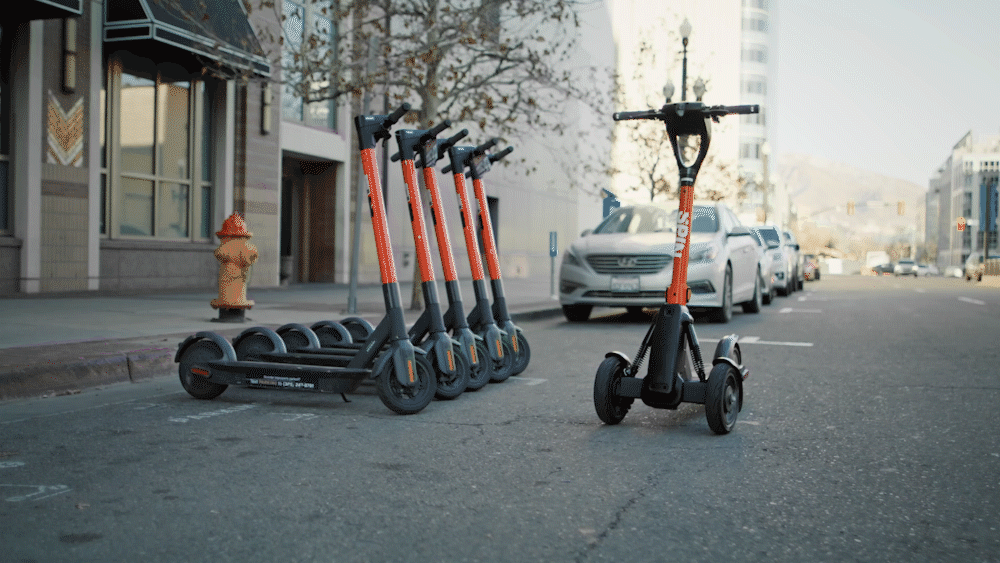Spin, the micromobility startup acquired by Ford, has developed a new scooter with partners Segway-Ninebot and software startup Tortoise that aims to solve the sidewalk clutter problem for good.
The Spin S-200 scooter not only has three wheels — a design change that helps it stand out in a crowded pool of two-wheelers — it’s also equipped with repositioning software that allows remote operators thousands of miles away to move vehicles off the sidewalk and into a proper parking spot. A fleet of about 300 Spin S-200 scooters will be tested in Boise, Idaho this spring. But the goal is much grander. Spin ultimately wants to roll out remotely operated scooters to cities in North America and Europe in 2021.
These scooters, which operate on the so-called Spin Valet platform, are equipped with front and rear-facing cameras. When combined with Tortoise’s software, the scooters can be controlled remotely.
The remote operations team will initially use the repositioning software to move the scooters if they’re blocking a sidewalk, crosswalk or handicapped space. Eventually, users will be able to hail a scooter, which will travel up to several blocks to their location, according to Tortoise co-founder and president Dmitry Shevelenko.
“We’re focused on making Boise wildly successful and I think if that happens, then the numbers kind of take care of themselves,” Shevelenko said in a recent interview. “If this Spin scooter gets even 25% more rentals per day than their standard fleet, they’re going to shift their fleet as quickly as possible.”
If that happens, the only real hurdle is getting the scooters manufactured. Shevelenko said a manufacturing bottleneck is unlikely because Segway-Ninebot has the tooling in place to make this a mass-produced product. “They have a lot of conviction around it,” he added in reference to Segway.
“There has been a lot of fanfare around the potential of remote-controlled e-scooters, but this partnership marks a turning point in tangible operational plans to bring them to city streets,” Spin’s chief business officer Ben Bear said in a statement. “In addition to providing reliability to consumers and more order to city streets, this could significantly improve unit economics, reducing carbon emissions and the operational work required to maintain and reposition fleets.”
Shevelenko said as important as the reposition is, the design of the actual scooter deserves attention as well. The S-200 is equipped with three independent braking systems — a regenerative rear brake, front and rear drum brakes — and turn signals located on handlebars and near the rear wheel.
“I think in some ways the three-wheeled scooter is as big of a deal,” Shevelenko said. “It’s necessary because it solves the balancing issue without a kickstand, but it’s also appealing to riders who aren’t dudes in their 20s. It’s higher up, you feel sturdier and it’s really hard to tip over and fall. And so, in terms of making sure people in their 40s and 50s and 60s feel comfortable getting on, I think this going to be very disruptive.”
Source: Tech Crunch



